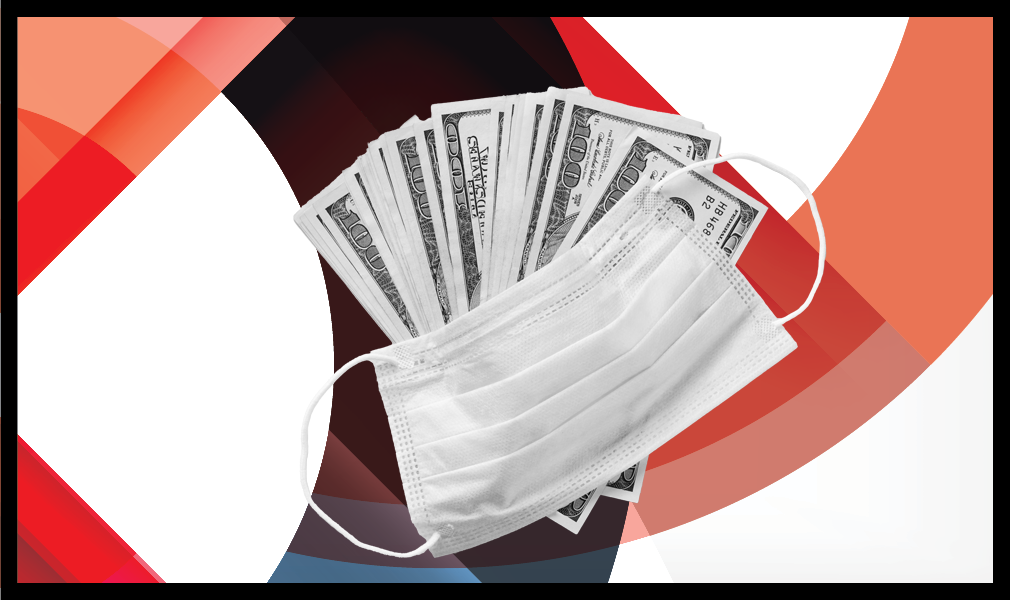
About 14% of real estate companies in the U.S. – including sales, leasing and maintenance firms – got funding in the first round of the Paycheck Protection Program created by Congress to rescue small businesses.
That share is based on loan data covering the April 3 to April 13 period from the Small Business Administration, the federal department overseeing distribution of the original $349 billion funded by Congress and the $320 billion that was added to it on April 27.
It’s almost on par with the 15% industry share for hotels and restaurants – among the hardest hit businesses as states shut down their economies in March to stem the spread of COVID-19. The shares are based on Labor Department data on the number of businesses in industries covered by the program.
In comparison, about 9.6% of retail businesses in the U.S. got PPP loans. About 7.3% of financial companies received funds, an industry classification that includes securities traders, lenders and banks.
The loans are intended to help companies keep employees on their payrolls amid the worst public health crisis in more than a century. They’re forgivable if used in a certain way, including if 75% goes to supporting payroll, according to the $2.2 trillion CARES Act that created the PPP.
On April 9, Senate Majority Leader Mitch McConnell attempted to add $250 billion to the program using a legislative technique known as unanimous consent. When the Senate is not in full session, a bill can pass that way as long as no senator objects.
Democrats objected because they wanted more funds added to the program, as well as a set-aside for small businesses that use community and regional banks. In addition, they wanted more resources for hospitals on the frontline of the pandemic.
In the end, the bill approved by the Senate on April 22 had $320 billion of additional funding for PPP, with $60 billion earmarked for community banks and small lenders.
Added together, the two funding rounds of $669 billion for PPP make it the largest rescue program since 2008’s $700 billion Troubled Asset Relief Program (TARP) that provided loans to the nation’s largest banks and insurers.
North Carolina Realtor Leigh Brown wasn’t successful in her first try for funding. She wasn’t able to get through before the initial round went dry in mid-April. As soon as the additional PPP funds were available, Brown put in a new application through the regional bank she uses, and it went through.
“I’m grateful for the loan, and my staff is grateful,” said Brown, who owns RE/MAX Leigh Brown & Associates, based in Concord, North Carolina.
Because of the way the loan distributions were handled, the industry-share numbers could change. For many small businesses, trying to get a loan has been a bit like being in a mosh pit – those areas at heavy metal concerts where body slamming is the rule.
The application and distribution process was a “free for all” that favored more powerful U.S. companies with longstanding relationships with the nation’s biggest banks, said Jeff Hauser, executive director of The Revolving Door Project, a government watchdog group at the Center for Economic and Policy Research in Washington D.C.
“It’s absolutely a mess,” Hauser said. “It’s an ill-designed solution to an extremely tricky problem: Helping America’s small businesses.”
Part of the problem is the SBA is an under-funded “backwater” agency that has lost 10% of its budget in the last decade, Hauser said.
“We have in the SBA the agency that our current political environment wants: Of, by and for big business,” said Hauser. Because the SBA is “ineffective,” the only route was to rely on the nation’s banks to vet applicants and distribute the funds, he said.
“Once they decided to work through banks, you had a few biases that were built into the system,” Hauser. “If you had an existing credit relationship with the bank,” such as a line of credit, “you were ahead from the start,” he said.
That left out many of the small businesses the program was intended for, he said.
Also, there was no “means test” included from the outset, resulting in the distribution of funds to deep-pocketed companies who met the initial standards.
Shake Shack and Ruth’s Chris Steak House got millions in loans – then returned them. Monty Bennett, the owner of luxury hotels and a major donor to the Republican Party, at first refused to return the $70 million he got. Then, he changed his mind.
On April 23, almost a month after the first loans were handed out, the Treasury added new eligibility guidance that, in an unusual step, it said it would apply retroactively. Anyone who met the initial qualifications but not the updated standard was ordered to return the funds.
According to the new rules, PPP loans can only go to firms that faced imminent “significantly detrimental” financial harm because of the COVID-19 pandemic. The firms also have to certify to the SBA that the current economic uncertainty made their loan request necessary to support ongoing operations.
“It is unlikely that a public company with substantial market value and access to capital markets will be able to make the required certification in good faith,” Treasury’s updated guidance said.
Mnuchin threatened a “full review” of any loan that exceeds $2 million, and demanded companies who don’t meet the new eligibility guidelines return the funds they received by May 7.
Mnuchin said the loan program was not intended to help “big public companies that have access to capital.”
“We’re going to put up very clear guidance so that people understand what the certification is, what it means if you’re a big company,” Mnuchin said three weeks after the launch of the emergency program.
“To the extent these companies didn’t understand this and they repay loans, that will be OK, and if not, there will be potentially other consequences,” he said.






